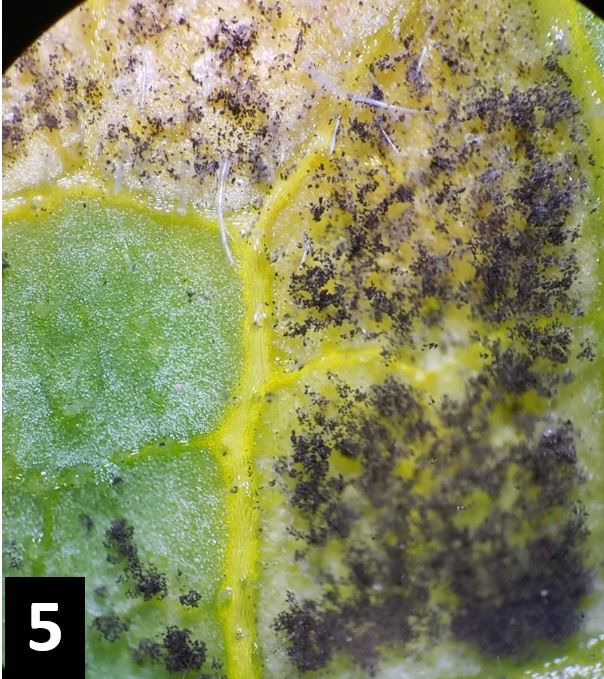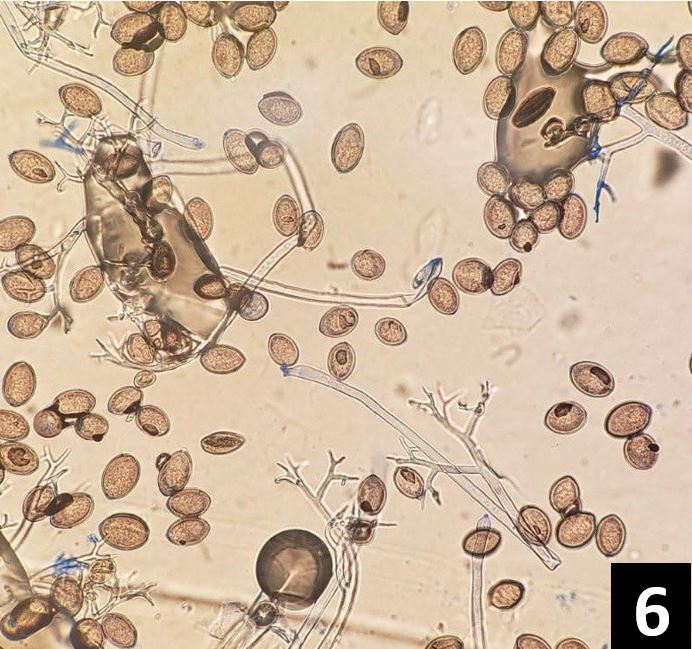First cucumber downy mildew outbreak of 2020 confirmed in Berrien County
Growers are urged to apply fungicides immediately.

Downy mildew on cucumber has been verified in Berrien County, which is located in southwest Michigan. This is the first confirmation of this devastating disease in the state for 2020. Our spore trapping network detected downy mildew spores from Berrien County for three days last week but we did not find diseased plants in nearby cucumber fields until today, June 22. The disease outbreak consisted of several plants with the characteristic “window-pane” yellow-brown lesion bordered on each side by the leaf veins (Photos 1-2).

A spore trap placed in Muskegon County detected downy mildew sporangia for one day last week but diseased plants have not yet been confirmed in this county. As of today, the spore traps have not detected the downy mildew spores at our monitoring locations on the east side of the state. Our spore trap webpage is updated with the latest results on Thursday morning of each week. The counts of the downy mildew sporangia from a field are always a few days behind due to processing of the spore tapes. We are able to distinguish between cucumber and hop downy mildew spores using molecular tools and both are reported.
This year’s outbreak is much ahead of 2019’s first outbreak. However, in other years, it has been common to record the first field outbreak around the first week of July. The warm and humid weather conditions this month favors downy mildew. It is very important that cucumber growers use a proven downy mildew program with fungicides that have shown good activity in our yearly Michigan research plots including:
- Ranman + chlorothalonil or mancozeb
- Orondis Opti (chlorothalonil is part of the premix)
- Elumin + chlorothalonil or mancozeb
- Zampro + chlorothalonil or mancozeb
- Previcur Flex + chlorothalonil or mancozeb*
*Note: Previcur Flex is back in the downy mildew fungicide recommendations for 2020 as it has been effective in the MSU research trials in 2018 and 2019. Prior to that, it had not been effective. Since we cannot yet predict whether this year’s downy mildew population will be controlled by Previcur Flex, be sure to use it as a tankmix with either chlorothalonil or mancozeb.

Alternate among these recommended fungicide treatments using a seven-day application interval. Growers on the west side of the state should be using this short, seven -day application interval for their fungicide sprays. Growers in other regions of the state could consider a 10-day application schedule until the first outbreak is detected. Many of the pickling cucumber crops are still quite young and should be protected, as a downy mildew infection at this stage would likely hurt yields significantly. Delaying fungicides until downy mildew is already well-established in the field is not recommended because it can be too late to protect the crop and this delay contributes to the downy mildew pathogen developing resistance to our most important, effective fungicides.
We will be watching the production areas carefully for the movement of downy mildew. We are working with growers, scouts, consultants and MSU Extension educators to make sure we get suspect samples immediately and make a diagnosis. Click here for instructions on how to submit samples.
Also, keeping an eye on the spore trap results across the state could be helpful in knowing when the cucumber downy mildew pathogen has been found in your particular production region. The cucumber downy mildew pathogen does not overwinter and the spores move via air currents. View the spore trap results and current downy mildew news.
Note: Cantaloupe crops are also at risk of becoming infected by the downy mildew pathogen and should be protected using the fungicides that have been proven to be effective in MSU research cucumber field studies.



 Print
Print Email
Email

